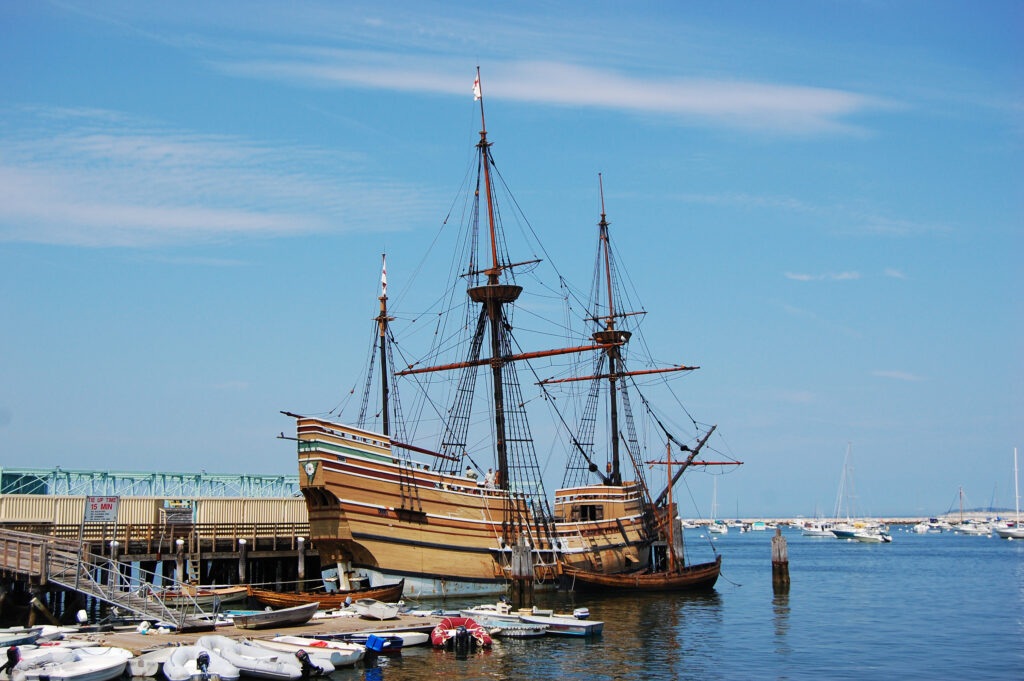Growing up, you might have seen a Thanksgiving play or two in your elementary school. Perhaps you even got to play the coveted role of the turkey! But what is the real history of Thanksgiving? What lies beyond the Thanksgiving story of solidarity and cooperation between pilgrims and indigenous peoples? Bloodshed, disease, and oppression. More and more people are observing the National Day of Mourning instead of Thanksgiving on the fourth Thursday of November. While we can continue to use Thanksgiving as an opportunity to give thanks and spend time with family and friends, we should also use it as an opportunity to recognize the violent history hidden behind the quaint narrative. In the process, we should vow to keep such tragedies (in their overt or subtle forms) from happening again in the future.

The Story of Thanksgiving
In 1620, around one hundred English passengers arrived in present-day Massachusetts on the Mayflower, where they set to work building a colony they called Plymouth. In this new home, they hoped to practice their religion freely while cultivating their own plots of land. But it wasn’t going to be easy. The winter was cold, and only half of them survived until the spring, the other half succumbing to harsh weather, scurvy, and disease. The pilgrims stole from the Wampanoag people’s provisions to make it through the winter.
Upon moving to shore, the pilgrims were greeted by a member of the Abenaki tribe, who connected them to Squanto. Squanto was a member of the Pawtuxet tribe who had already suffered extensively under colonization. Kidnapped by an English sailor, he was sold into slavery and forced to escape to London. He ultimately returned to North America on an exploratory expedition. Nevertheless, he taught the pilgrims how to cultivate the new crops and navigate the foreign landscape in front of them. He even helped the pilgrims form an alliance with the Wampanoag tribe, who needed political cooperation to survive colonization.
Upon a successful first harvest, Governor William Bradford ordered a three-day celebratory feast and (allegedly) invited tribe members to join in on the festivities. But this invitation is now being called into question, as it is possible that the ninety Wampanoag tribe members who partook in the feast were army men who had heard gunshots and had only come to evaluate the situation.
It is highly uncertain whether this feast was indeed the origin of our modern Thanksgiving; it was not the only feast to take place during this time period, and there was a gap of nearly 250 years between the events in Plymouth and Abraham Lincoln’s official declaration of the holiday in 1863. Until then, multiple Thanksgivings were held on different days of the year. The menu of the Plymouth Thanksgiving also looked quite different from what we know today: it used indigenous spices and cooking methods, and because there was little sugar, it was bereft of pies and cakes.
You can learn more basic facts about Thanksgiving’s history here.

The story of Thanksgiving has been critiqued for its failure to address the oppressive relationship between colonists and indigenous peoples. The settlers and early United States government policies were responsible for a genocide that resulted in the death of about 12 million people between 1492 and 1900. For this reason, people also recognize Thanksgiving Day as the National Day of Mourning. That fifty-year alliance mentioned earlier was full of tension due to colonists’ exploitation of both indigenous land and indigenous people. Thus, King Philip’s War broke out and devastated the Wampanoag tribe; even today, tribal members experience Thanksgiving as a burden and an insult.
dosomething.org has put together a great list of suggestions for how to respectfully honor Thanksgiving today. Among them are tips like incorporating indigenous recipes into your holiday spread, discussing the true history of Thanksgiving with family and friends, starting the meal with a land acknowledgment, and reading/watching/listening to indigenous stories. We can still eat our pumpkin pie and cornbread, but this year, let’s try doing so with a little more mindfulness.
 Food
Food Farmers
Farmers Sustainable Living
Sustainable Living Living Planet
Living Planet News
News